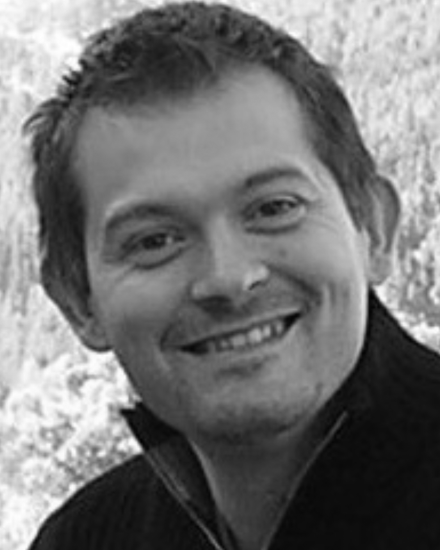Abstract:
This paper presents an intelligent tutoring system (ITS) for the learning of arithmetical problem solving. This is based on an analysis of a) the cognitive processes that...Show MoreMetadata
Abstract:
This paper presents an intelligent tutoring system (ITS) for the learning of arithmetical problem solving. This is based on an analysis of a) the cognitive processes that take place during problem solving; and b) the usual tasks performed by a human when supervising a student in a one-to-one tutoring situation. The ITS is able to identify the solving strategy that the student is following and offer adaptive feedback that takes into account both the problem's constraints and the decisions previously made by the user. An observational study shows the ITS's accuracy at emulating expert human supervision, and a randomized experiment reveals that the ITS significantly improves students' learning in arithmetical problem solving.
Published in: IEEE Transactions on Learning Technologies ( Volume: 7, Issue: 2, April-June 2014)

Department of Didactics of Mathematics, University of Valencia, Valencia, Spain
David Arnau received the degree in physics from the University of Valencia, Spain. In 2010, he received the PhD degree in educational mathematics from the University of Valencia. He taught mathematics and physics at secondary level for 13 years. He is currently a lecturer in the Department of Didactics of Mathematics at the University of Valencia. He is a member of the board of the Spanish Society of Research in Mathemati...Show More
David Arnau received the degree in physics from the University of Valencia, Spain. In 2010, he received the PhD degree in educational mathematics from the University of Valencia. He taught mathematics and physics at secondary level for 13 years. He is currently a lecturer in the Department of Didactics of Mathematics at the University of Valencia. He is a member of the board of the Spanish Society of Research in Mathemati...View more

Computing Department, University of Valencia, Valencia, Spain
Miguel Arevalillo-Herráez received the first degree in computing from the Technical University of Valencia, Spain, in 1993, the BSc degree in computing in 1994, the PgCert in teaching and learning in higher education, and the PhD degree in 1997, all from Liverpool John Moores University, United Kingdom. On the same year, he gained accreditation as a teacher in HE by the Staff and Educational Development Association (SEDA)...Show More
Miguel Arevalillo-Herráez received the first degree in computing from the Technical University of Valencia, Spain, in 1993, the BSc degree in computing in 1994, the PgCert in teaching and learning in higher education, and the PhD degree in 1997, all from Liverpool John Moores University, United Kingdom. On the same year, he gained accreditation as a teacher in HE by the Staff and Educational Development Association (SEDA)...View more

Department of Mathematics, University of Castilla-La Mancha, Albacete, Spain
José Antonio González-Calero received the degree in industrial engineering from the University of Castilla-La Mancha, in 2005. He received the master's degree in secondary school teacher from the University of Castilla-La Mancha and also the master's degree in research in didactic of mathematics from the University of Valencia in 2010 and 2011, respectively. Since 2010, he has been a lecturer in the Department of Mathemat...Show More
José Antonio González-Calero received the degree in industrial engineering from the University of Castilla-La Mancha, in 2005. He received the master's degree in secondary school teacher from the University of Castilla-La Mancha and also the master's degree in research in didactic of mathematics from the University of Valencia in 2010 and 2011, respectively. Since 2010, he has been a lecturer in the Department of Mathemat...View more

Department of Didactics of Mathematics, University of Valencia, Valencia, Spain
David Arnau received the degree in physics from the University of Valencia, Spain. In 2010, he received the PhD degree in educational mathematics from the University of Valencia. He taught mathematics and physics at secondary level for 13 years. He is currently a lecturer in the Department of Didactics of Mathematics at the University of Valencia. He is a member of the board of the Spanish Society of Research in Mathematics Education (SEIEM). His research interest include educational algebra and the development of interactive learning environments for the teaching and learning of word problem solving.
David Arnau received the degree in physics from the University of Valencia, Spain. In 2010, he received the PhD degree in educational mathematics from the University of Valencia. He taught mathematics and physics at secondary level for 13 years. He is currently a lecturer in the Department of Didactics of Mathematics at the University of Valencia. He is a member of the board of the Spanish Society of Research in Mathematics Education (SEIEM). His research interest include educational algebra and the development of interactive learning environments for the teaching and learning of word problem solving.View more

Computing Department, University of Valencia, Valencia, Spain
Miguel Arevalillo-Herráez received the first degree in computing from the Technical University of Valencia, Spain, in 1993, the BSc degree in computing in 1994, the PgCert in teaching and learning in higher education, and the PhD degree in 1997, all from Liverpool John Moores University, United Kingdom. On the same year, he gained accreditation as a teacher in HE by the Staff and Educational Development Association (SEDA) and became a senior lecturer at Liverpool John Moores University. In 1999, he left to work for private industry for a one year period, and came back to academy in 2000. He was the program leader for the computing and business degrees at the Mediterranean University of Science and Technology until 2006. He is currently working as a lecturer in the University of Valencia, Spain. His research interests include applied artificial intelligence and pattern recognition.
Miguel Arevalillo-Herráez received the first degree in computing from the Technical University of Valencia, Spain, in 1993, the BSc degree in computing in 1994, the PgCert in teaching and learning in higher education, and the PhD degree in 1997, all from Liverpool John Moores University, United Kingdom. On the same year, he gained accreditation as a teacher in HE by the Staff and Educational Development Association (SEDA) and became a senior lecturer at Liverpool John Moores University. In 1999, he left to work for private industry for a one year period, and came back to academy in 2000. He was the program leader for the computing and business degrees at the Mediterranean University of Science and Technology until 2006. He is currently working as a lecturer in the University of Valencia, Spain. His research interests include applied artificial intelligence and pattern recognition.View more

Department of Mathematics, University of Castilla-La Mancha, Albacete, Spain
José Antonio González-Calero received the degree in industrial engineering from the University of Castilla-La Mancha, in 2005. He received the master's degree in secondary school teacher from the University of Castilla-La Mancha and also the master's degree in research in didactic of mathematics from the University of Valencia in 2010 and 2011, respectively. Since 2010, he has been a lecturer in the Department of Mathematics at the University of Castilla-La Mancha. He is currently working toward the PhD degree in educational mathematics at the University of Valencia. He worked in developing accounting systems for financial institutions until 2009. His research interests include educational algebra, word problem solving, and interactive learning environments. He is a member of the Spanish Society of Research in Mathematics Education (SEIEM).
José Antonio González-Calero received the degree in industrial engineering from the University of Castilla-La Mancha, in 2005. He received the master's degree in secondary school teacher from the University of Castilla-La Mancha and also the master's degree in research in didactic of mathematics from the University of Valencia in 2010 and 2011, respectively. Since 2010, he has been a lecturer in the Department of Mathematics at the University of Castilla-La Mancha. He is currently working toward the PhD degree in educational mathematics at the University of Valencia. He worked in developing accounting systems for financial institutions until 2009. His research interests include educational algebra, word problem solving, and interactive learning environments. He is a member of the Spanish Society of Research in Mathematics Education (SEIEM).View more

